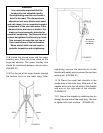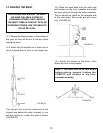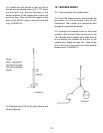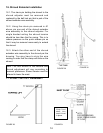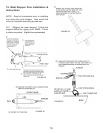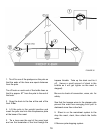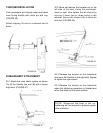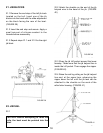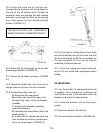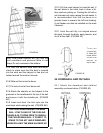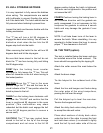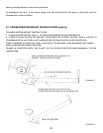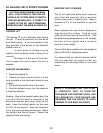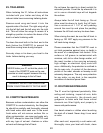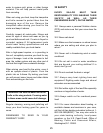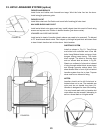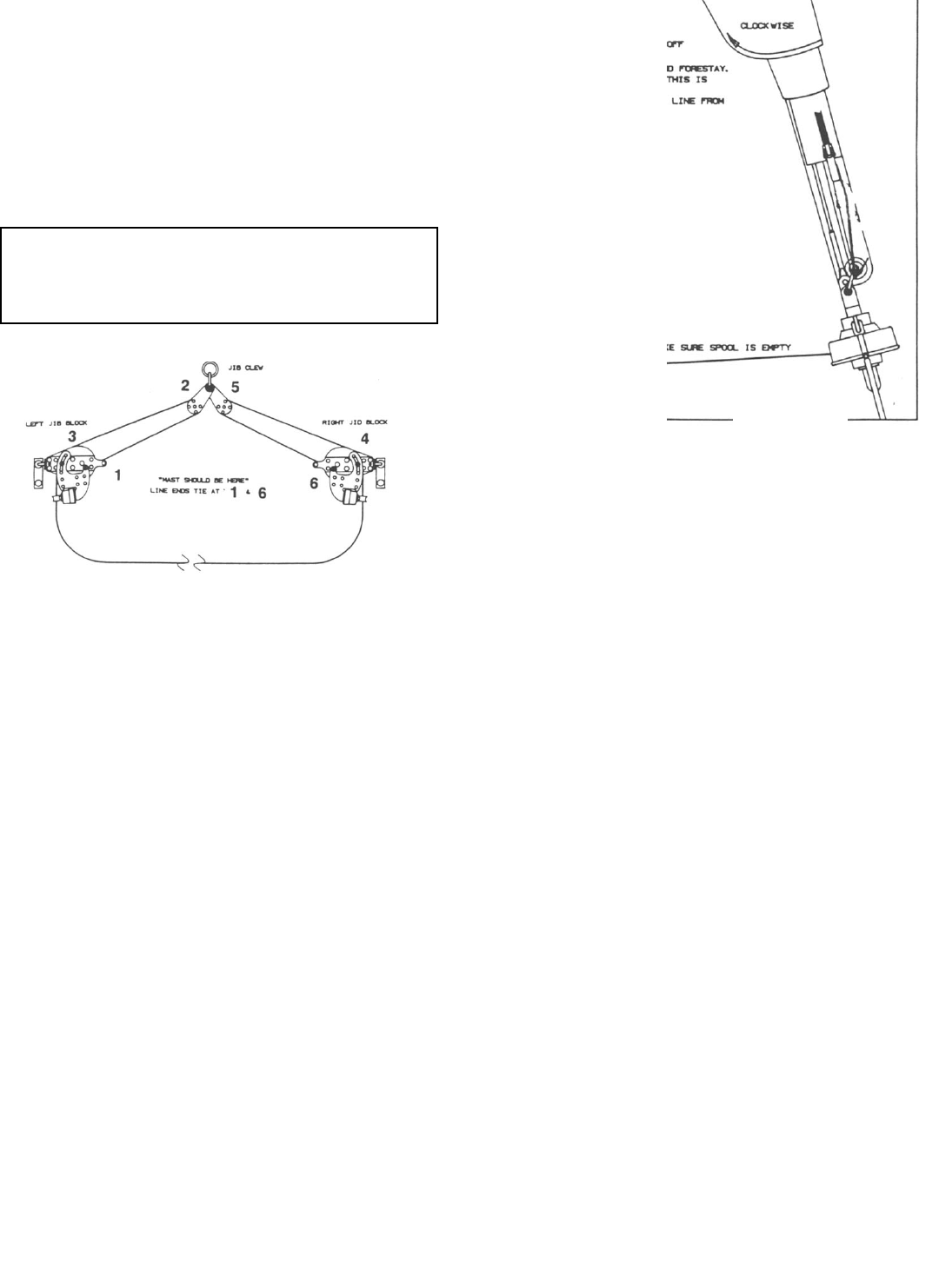
22.5 Untie and store the jib halyard line.
Connect the jib tensioner line to the block on
the end of the jib halyard wire. Thread the
tensioner down and through the tack shackle
and back up through the block on the halyard
wire. Then secure it to tack shackle with half
hitches. (FIGURE 41)
22.10 To furl the jib, uncleat the jib sheet (both
port and starboard) and pull the furler line until
the jib is completely furled. Do not partially furl
the sail because this will cause uneven
stretching of the exposed sail.
22.11 Once the rigging has been tensioned,
the jib luff may need final adjustment before
sailing.
23. MAIN SAIL
23.1 Lay the sail flat. It's important that the sail
is perfectly flat on the ground. A wrinkled sail
could lead to a tear in the sail fabric when the
battens are pushed into their pockets.
23.2 Place the battens next to the proper
pocket.
23.3 Insert the battens, flat end first.
23.4 Tie each batten as shown. (FIGURE 44)
FIGURE 43
FIGURE 42
19
JIB SHOULD ONLY BE TENSIONED
WHEN THE MAIN IS SHEETED TIGHTLY.
22.6 Attach the jib clew blocks to the jib clew
plate using a shackle. (FIGURE 42)
22.7 Attach the jib sheet as shown. (FIGURE
43)
22.8 Temporarily attach the roller furler line to
the jam cleat on the top of the front crossbar.
22.9 To adjust the roller furler line:
A. disconnect the clew blocks;
B. pull the furler line all the way out of
the spool and cleat it off on the forward
crossbar;
C. wrap the jib clockwise completely
around the forestay;
D. reconnect the clew blocks (this is the
furled position);
E. to unfurl the jib, release the furler line
from the cleat on the front crossbar and
pull in on the jib sheet. (FIGURE 43)



